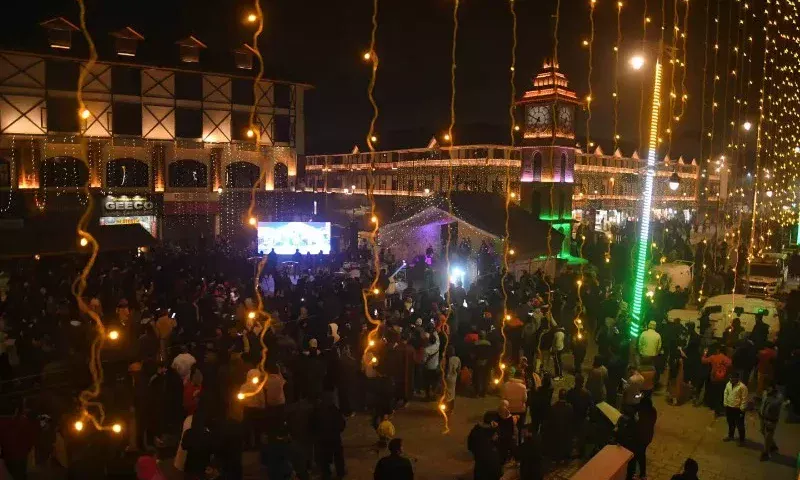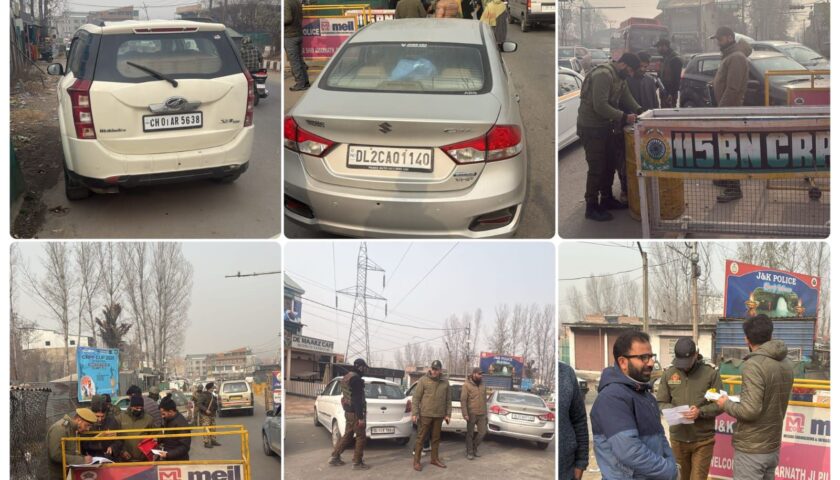Children Lured From Delhi, Forced Into Bonded Domestic Labour in Kashmir
By: Javid Amin | 28 Aug 2025
A Dark Trade Uncovered
Human trafficking is often described as “modern-day slavery”, and in India, it remains one of the most underreported yet devastating crimes. On the surface, the recent bust in Srinagar may appear like a single operation—a joint success by Delhi Police and J&K Police. But beneath it lies a deeper story: a shadow economy of stolen childhoods, where poverty, migration, and weak enforcement collide.
On August 2025, Delhi Police confirmed that they had rescued two teenage girls trafficked from Bhalswa Dairy, Delhi, and forced into bonded domestic labour in Kashmir. The case unraveled an interstate trafficking racket, operating quietly for at least two years.
This investigation, however, is more than a crime story—it is a mirror into how India continues to fail its most vulnerable children.
The Srinagar Rescue: How the Case Broke
The operation began with the disappearance of two neighbours—a 15-year-old and a 13-year-old girl—from Bhalswa Dairy in 2024. Their families, migrants from Uttar Pradesh, had filed missing reports. Months passed without any breakthrough, until one of the girls managed to secretly contact a known person, who alerted police.
By June 2025, Delhi Police traced them to a Srinagar household, where they were forced to work as domestic helps—without wages, education, or freedom of movement.
“The girls were lured at the Old Delhi Railway Station with false promises of jobs and then trafficked to Srinagar, where they were placed as bonded labourers,” said DCP (Outer North) Hareshwar Swami.
Their testimony to the Child Welfare Committee cracked open the larger network, linking traffickers across Delhi, Uttar Pradesh, Punjab, and Jammu & Kashmir.
Modus Operandi: Anatomy of a Trafficking Racket
This case shows the standard pattern of trafficking in India:
-
Targeting the Vulnerable
-
Children from migrant families, rag-pickers, and daily wage workers in Delhi’s slums were identified.
-
Recruiters preyed on desperation, offering “jobs” and “better futures.”
-
-
Transit and Disappearance
-
Old Delhi Railway Station emerged as a hub where traffickers picked up children.
-
Once on a train or bus, children vanished into the untraceable informal economy.
-
-
Exploitation in Srinagar
-
The children were placed in middle-class and affluent homes as live-in maids.
-
Workload included cleaning, cooking, and childcare, often up to 14–16 hours a day.
-
They were denied wages, communication, and education.
-
-
Network Secrecy
-
Brokers ensured children were scattered across households to avoid detection.
-
Local employers preferred trafficked children because they were “cheap and silent.”
-
Scale of the Crisis: Numbers That Shame India
This single case highlights a larger national trafficking emergency:
-
10,000+ children go missing every year in India (National Crime Records Bureau).
-
NGOs estimate the real figure is 3–4 times higher, with many cases unreported.
-
In 2023, only 30% of missing children were traced.
-
Domestic labour is the second-largest sector (after sex trafficking) where children end up trapped.
Why Kashmir?
Kashmir’s peculiar conditions make it a destination point:
-
High demand for domestic labour in Srinagar’s urban households.
-
Lack of monitoring due to conflict and political volatility.
-
Weak labour inspection mechanisms.
The Human Toll: Childhood Stolen
The trauma suffered by the rescued girls is only the tip of the iceberg.
-
Lost Education: Years without school destroy chances of upward mobility.
-
Psychological Wounds: Children internalize guilt, fear, and low self-worth.
-
Health Risks: Malnutrition, exhaustion, and abuse—both verbal and physical—are common.
One rescued girl reportedly told officials:
“We cleaned, cooked, and washed every day. If we asked about going home, they beat us. We thought we would never see our families again.”
Such words reflect not just bonded labour but modern slavery in its rawest form.
Legal Landscape: Why Laws Fail
India has multiple laws meant to combat trafficking:
-
Immoral Trafficking Prevention Act (ITPA), 1956
-
Bonded Labour Abolition Act, 1976
-
Juvenile Justice Act, 2015
-
Protection of Children from Sexual Offences (POCSO), 2012
And yet, conviction rates remain abysmally low. Why?
-
Fragmented Enforcement – Different states, different police priorities.
-
Employer Shielding – Middle-class households employing trafficked children rarely face punishment.
-
Weak Rehabilitation – Rescued children are often sent back to poverty, becoming vulnerable again.
The 2018 Trafficking of Persons Bill promised a central anti-trafficking bureau, but it has stalled.
The Kashmir Angle: More Than Just a Crime
This bust has wider implications for Kashmir:
-
Conflict Shadows: Three decades of conflict have normalized surveillance, yet trafficking flourished under the radar.
-
Identity Vulnerability: Migrant children from outside Kashmir often lack documents, making them invisible.
-
Trust Deficit: For Kashmiri society, which prides itself on hospitality, the use of trafficked children exposes uncomfortable truths.
Voices of Concern
-
NGOs: “This is not just a Delhi-to-Srinagar racket. It’s a pipeline. Unless we regulate placement agencies and household labour, this will continue,” says an activist with Bachpan Bachao Andolan.
-
Ex-Police Officials: “We treat trafficking as isolated kidnappings, not organized crime. That mindset must change.”
-
Child Psychologists: “These children need long-term therapy. Rescue is just the first step.”
Global Context: India’s Position
According to the Global Slavery Index (2023):
-
India has over 8 million people living in conditions of modern slavery.
-
Most are in forced labour, bonded debt, or trafficking.
-
India is both a source and destination country for trafficked persons.
This Srinagar bust is a reminder that India’s challenge is not marginal—it is systemic.
What Needs to Change?
-
Unified Anti-Trafficking Law – A single, strong act with central enforcement.
-
Regulation of Placement Agencies – Many traffickers hide behind unregistered “job providers.”
-
Employer Accountability – Urban households employing children must face penalties.
-
Stronger Child Protection Units – Each district must have a rapid-response anti-trafficking team.
-
Rehabilitation, Not Just Rescue – Education, counseling, and economic support for rescued children.
Bottom-Line: A Call for Vigilance
The Srinagar trafficking bust is not an isolated case—it is a window into how poverty, negligence, and demand create a cycle of exploitation.
Two girls were rescued, but how many remain invisible in kitchens, factories, and streets across India?
Until trafficking is treated not as charity work but as a national security and human rights crisis, India’s children will remain vulnerable to the next racket waiting at a railway station.




